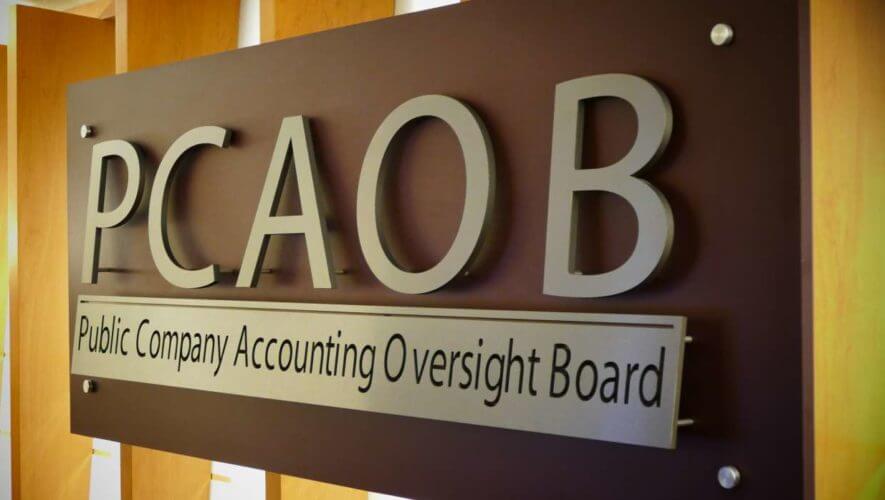A few days ago the paper-pushers at the PCAOB released 15 new inspection reports and three expanded reports for the following firms:
Inspection reports
- De Visser Gray LLP (Canada)
- Ernst & Young Limited Corp. (Panama)
- Frost, PLLC
- Harbourside CPA LLP (Canada)
- Keith K Zhen CPA
- Maggart & Associates, P.C
- Miller Wachman LLP
- PBMares, LLP
- PKF O’Connor Davies, LLP
- PricewaterhouseCoopers LLP (Canada)
- Rehmann Robson LLC
- Schneider Downs & Co., Inc
- UHY LLP
- Warren Averett, LLC
- Zwick CPA, PLLC
Expanded reports
- Baker Tilly US, LLP (12/21/2020 Report)
- Ernst & Young, S.L. (Spain) (9/9/2021 Report)
- MaloneBailey, LLP (12/17/2020 Report)
Today we’re going to talk about PwC Canada, if you want to check out the others head over to the PCAOB’s inspection report lookup.
The 2022 inspection of PwC Canada [PDF] is not great. Some might even say bad. Compared to prior year inspections and some of the catastrophic issues the PCAOB has uncovered in audit firms of all sizes over the last several years, it’s not terrible. In a time of deteriorating audit quality, an inspection report of this caliber might not stand out as bad compared to other firms but PwC US had a deficiency rate of 1.9% in its most recent inspection thereby making their cousins in the North look incompetent by comparison. Worse, PwC Canada’s last inspection was flawless, making this tumble from their own perfection more pronounced.
Of the eight audits selected by the PCAOB for inspection for the 2022 inspection of PwC Canada, 63% had Part I.A deficiencies. For one of these lucky audits, PwC Canada was not the primary auditor. The PCAOB did not ding the firm for issuing incorrect opinions on the financial statements and/or internal control over financial reporting but mostly for a lack of substantive procedures.
For 2022, the PCAOB was especially interested in reviewing revenue and business combinations; last time around it was use of other auditors that they put the magnifying glass on which makes it extra funny that PwC Canada got dinged for this very issue this time around.

Part I.A focuses on audits with unsupported opinions. For one energy issuer, the firm selected for testing a control that consisted of management’s review of the impairment analysis of long-lived assets. The firm did not identify and test any controls over the accuracy and completeness of a report, which included discounted cash flows, used in the operation of this control. (AS 2201.39)
In the same issuer, the issuer engaged an independent qualified reserve engineer to estimate its oil and gas reserves, which were then used in the (1) calculation of depreciation, depletion, and amortization; (2) impairment analysis of long-lived assets; and (3) valuation of a business combination. The reserve estimates were also used in the operation of certain controls over the above activities that the firm selected for testing. The firm did not identify and test any controls over the (1) accuracy and completeness of information prepared by the issuer, (2) relevance and reliability of data from external sources, and (3) methods and assumptions; all of which were used by the company’s specialist to
develop the reserve estimates. (AS 2201.39)
Nor did the firm:
- Test the accuracy and completeness of information prepared by the issuer and used by the company’s specialist to develop the reserve estimates; (AS 1105.A8a)
- Evaluate the relevance and reliability of external data used by the company’s specialist to develop the reserve estimates; (AS 1105.A8a)
- Evaluate the reasonableness of the assumptions developed by the company’s specialist and used to develop the reserve estimates; (AS 1105.A8b) and
- Evaluate whether the methods used by the company’s specialist to develop the reserve estimates were appropriate under the circumstances, taking into account the requirements of the applicable financial reporting framework, beyond inquiry of the methods used with the company’s specialist. (AS 1105.A8c)
In another issuer, the PCAOB identified deficiencies in the financial statement audit related to revenue, unbilled receivables, and deferred revenue. In this case, the PCAOB found the firm did not perform substantive procedures outside of the selected contracts, unbilled receivables and deferred revenue the firm selected for testing. This was a new client and therefore PwC Canada’s first audit of said issuer.
The PCAOB dinged them again for deferred revenue in the audit of an information technology issuer:
To test the existence of deferred revenue, the firm selected a sample of items for testing. The sample size the firm used in its substantive test of details was too small to provide sufficient appropriate audit evidence because the firm did not take into account the characteristics of the population in determining its sample size. (AS 2315.16, .23, and .23A)
AND they got them on the audit on which PwC was not the primary auditor. The firm’s report on Form AP omitted information related to the
participation in the audit by an other accounting firm meaning the firm was non-compliant with PCAOB Rule 3211, Auditor Reporting of Certain Audit Participants. *clutches pearls*
In its response to the report, PwC gave the usual canned speech. Apologies for the deep-fried jpg, this is how it looks in the inspection report.

2022 PCAOB Inspection of PwC Canada [PDF]




